In 1966 when England last won the World Cup there were close to 40,000 open forecourts in the UK. The numbers have declined every single year since then and the question a few years ago was "how low will we go?"
Experian Catalist has been actively monitoring the numbers since 2000, and 2005 was when the numbers dropped below the benchmark 10,000 sites. In 2007 the rate of decline started to slow and in 2011 and 2012 the net annual closure rate fell below 100. The headline news is that in 2013 the number of open forecourts in the UK actually increased.
Compared to last year’s annual review we are reporting a net increase of 26 sites. It may not be many, but this is the first increase since 1966 so let’s hope it’s an omen for the performance of the England football team in Brazil. More specifically, for many of the readers of Forecourt Trader, it is the dealer sector that has grown in numbers significantly 154 over the year led by the transfer of the Esso company-owned sites into the dealer network with Euro Garages and MRH.
We recorded 59 new-build sites over the year. This comprised 35 by the major multiple retailers (down from 46 in the previous year primarily due to a slowdown in Tesco’s development programme), with 23 new dealer sites and only one new oil company site. In addition, 61 sites re-opened after a period of closure.
Carrying on the trend from last year, the number of sites changing ownership from oil company to dealer was significant 188 in the last year mainly 126 sites from Esso, with 20 from Shell and 23 from BP. We also recorded that over 700 dealer sites 13% of the dealer network changed fuel supplier brand over the past year.
A continuing sign that the industry is in a reasonably healthy position is that during the past year we have recorded a low number of closures a total of 112 including 98 dealer sites. These closures were primarily from unbranded (36), Texaco (12) and the rest from various minor brands. In the company-owned sector there were only four closures.
Property market
From a property market perspective, forecourt and convenience values are continuing to hold up better than in most other sectors, and we have seen an influx of private equity capital, which provides a boost to confidence in the sector. Compared with high street retail, the forecourt sector has performed well and again we have had no significant financial failures from among the major players across the industry.
Indeed the past year has seen the continuing rise of the ’super dealers’ with MRH, Euro Garages, Motor Fuel Group, Petrogas and Rontec leading the way in increasing site numbers. With Esso intending to sell its remaining 200 sites in 2014, their estates are likely to increase further.
The various co-op societies are still actively acquiring sites in the forecourt sector, and a number of the hypermarkets have made statements of intent with respect to acquiring or building standalone forecourts as a vehicle for their convenience offer. Three of the four hypermarkets made a start on this towards the end of 2013 by acquiring existing forecourts, and Asda intends to have 100 standalone sites by 2018.
Fuel prices
Ask most members of the general public and they will almost certainly complain about the price of fuel on the forecourt and how much it has gone up. However, the chart below demonstrates that for the second year running the pump price has gone down by 2ppl-3ppl (May 2014-May 2013) and that retail prices have been relatively stable around a range +/-5ppl for the past three years.
This stability was helped by the fact that the government has not altered the level of duty and looks likely to continue with this policy until the next general election in May 2015.
Fuel volumes
There has been much made of falling fuel volumes over the year and there was some consternation when the Department of Energy and Climate Change (DECC) produced figures that showed a big jump in the hypermarkets’ fuel volumes, which appeared to suggest that the rest of the network was even further down.
However, following an in-depth review DECC finally released the revised official figures at the end of March that agree with HM Revenue & Customs (HMRC) figures.
They show that the deliveries of motor fuels (petrol and diesel) for full year 2013 were only 0.3% down against 2012 levels at 45bn litres. Drilling down into the 2013 full-year figures, they show a 2.4% increase in diesel volumes to 27bn litres, and a 4.1% decrease in petrol volumes to 18bn litres.
In terms of retail fuel volumes (primarily excluding commercial diesel) total volumes declined by 1.3% from 36bn in 2012 to 35.5bn in 2013.
For the hypermarket sector within retail, the revised DECC figures show fuel volumes static between 2012 and 2013 at 15.5bn litres equivalent to a 43.8% market share of retail volumes.
The rest of the retail network, covering the dealer and company owned sectors but excluding the hypermarkets, shows a decline of 2.3% from 20.4bn litres in 2012 to 19.9bn litres in 2013.
Market structure
As the above shows, when compared with the Forecourt Trader Fuel Market Review 2013, we see that UK site numbers have increased by a net 26 sites.
That means we are now reporting that there are 8,616 open retail sites in the UK with an average fuel volume unchanged at just over 4.1mlpa, and shop sales total £4.3bn an average of £10,900 per site per week from an average 67sq m shop.
There are now 5,341 independent dealer sites in the UK (a net increase of 154 sites compared with last year’s Fuel Market Review) and almost one third of these sites are operated by dealer groups with three sites or more. The average dealer site now sells 2.1mlpa and turns over £9,000 per week through a 64sq m shop.
In light of the revised DECC figures for the hypermarkets, and with nearly 16% (1,358) of the sites, Experian calculates the hypermarkets hold a 43.5% share of motor fuel sales and they are the single largest sector by some margin.
The dealer sector has grown in numbers since last year, and now has 62% of the sites, but it remained fairly static in terms of motor fuel market share at 31.7%. The oil company owned sector now has only 22% of the sites and its share of the motor fuel market has dropped below 25%.
In the regional breakdown of the forecourt sector, the South East continues to dominate. Almost a quarter of the sites, 30% of the UK’s motor fuel sales and 34% of forecourt shop sales are concentrated there.
Northern Ireland has the smallest regional market share in terms of fuel volume, but there has been a lot of activity in the past 12 months with new sites entering the market, and the number of open sites has actually increased by 11.
Market shares and brands
Esso, with the Rontec sites transferring from Total, made the biggest gains over the past 12 months (+106) along with Certas Energy (+29). All the major multiple retailers added sites into their networks over the past year, although Tesco only added two. BP (-49), Shell (-13) and Texaco (-17) all lost sites during the year, and Harvest Energy had a net change of one site after several years of significant growth.
The unbranded sites have increased to 728 but they remain most vulnerable to the continued squeeze on margins and to the pressures on environmental factors surrounding forecourt operation.
In the dealer sector, Certas Energy supplies the most sites with 1,023 (+30), followed by BP with 841 (-52) and Texaco is in third place with 802 (-17) sites. Esso gained the most dealer sites this year (+122) as it moved a number of tranches of its company-owned sites into the dealer sector, and the Rontec sites also rebranded to Esso. In terms of motor fuel market share in the dealer sector, BP leads the way with 27.2%, Texaco is next with 18.7%, then Esso with 13.5% and Certas Energy with 12.3%.
Forecourt shops
Overall sales from the forecourt shop sector have remained at around £4.3bn per year in the UK. There are now more than 2,000 sites with convenience stores and they account for 53% of forecourt shop sales. The average convenience store turns over £22,000 per week from 136sq m of floorspace.
Similarly to last year, in the dealer market shop sales are more than £2bn per year (49% of the forecourt shop sales sector). Within the dealer sector 90% of sites now have a shop and 24% of the sites (1,173) have a convenience store, an increase of 63 sites on 2013.
In terms of forecourt shop fascias the Tesco/Tesco Express shop fascia leads the way on 685 sites (+5). This includes the Esso/Tesco Alliance sites as well as the shops on its own forecourts, and it has almost 17% of the £4.3bn forecourt shop market. Spar is the most prevalent symbol fascia, appearing on 633 forecourts (+34), and holds a 10.7% market share. The Shell Select/Deli2go fascia is the third most numerous on 561 (+64) sites with 7.5% of the market.
At the other end of the scale, 511 dealer sites have no forecourt shop at all. Experian is also recording over 20% of forecourt shops (1,541) have no brand on their shop, although this is 120 less than last year. In terms of regional distribution, the South East dominates with 34% of forecourt shop sales, and the next region is the South West with 10%.
The outlook
Overall, the optimistic position we adopted in the 2013 Fuel Market Review has generally been borne out and there are some other positive issues continuing into 2014 including:
new car registrations up in the first quarter by nearly 14% almost back to the level of 2004;
margins continuing to look fairly robust;
fuel duty deferment options;
the rural fuel duty relief scheme introduced in 2013.













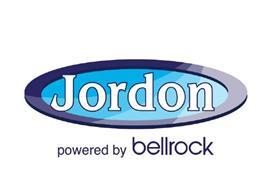
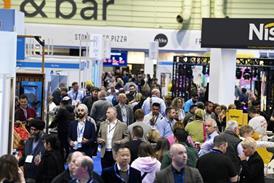

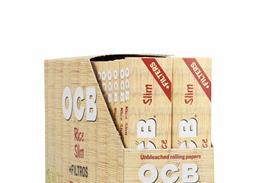
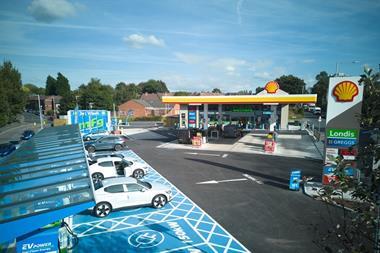




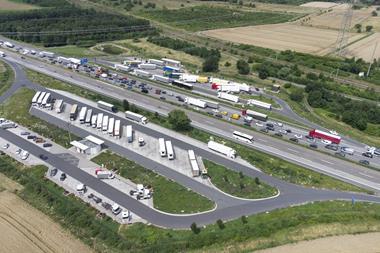

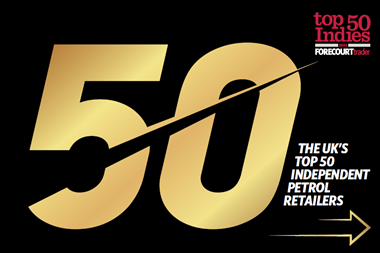

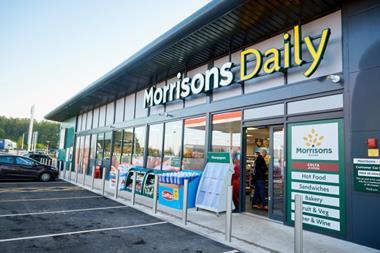
No comments yet